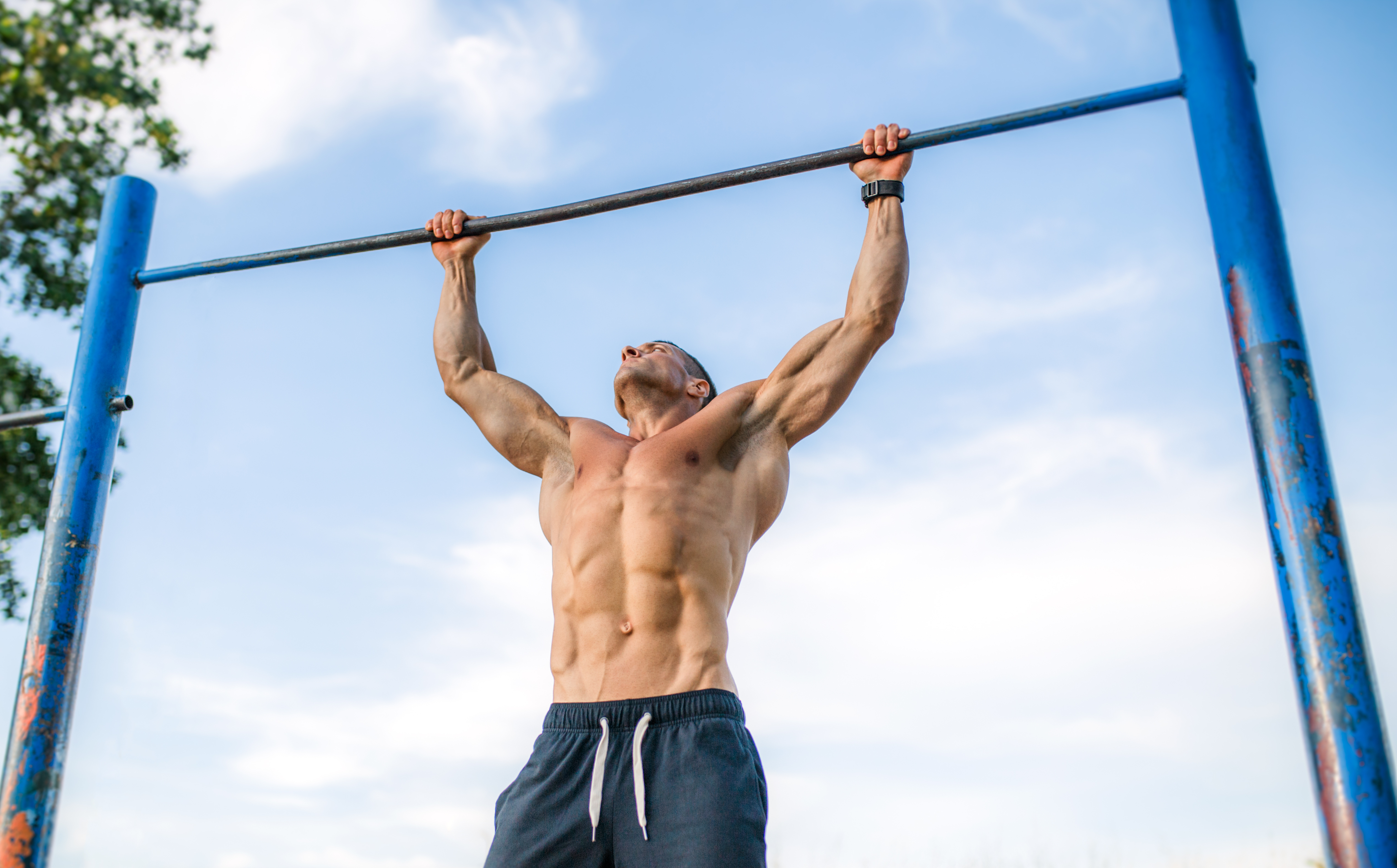
Pull-ups are one of the most coveted bodyweight exercises for strengthening your upper body, namely your back, biceps and posterior deltoids (the rear shoulder muscles).
For many, it’s a long process and takes a slow, progressive build-up to get there, so the pull-up hold — also known as a flexed arm hang — could help you build the prerequisite upper-body strength if a pull-up is your goal.
To do it, you’ll hold your body weight in the top position of a pull-up with your chin over the bar and elbows bent. This creates isometric muscle contraction, where muscles neither flex, extend, shorten, or lengthen during an exercise.
Here’s how to do the pull-up hold step-by-step, the benefits, and a few tips and exercises you can try to help you build to your first pull-up.
How to do the flexed arm hang (pull-up hold)
While dead hangs focus on practicing the bottom phase of a pull-up, flexed arm hangs focus on the top position when your chin reaches over the bar.
Learn how to do pull-ups in more detail here.
- If you’re unable to jump up to the bar, position a box or similar beneath and stand on it so that your chin isn’t far below the bar
- Grip the pull-up bar with an overhand grip roughly shoulder-width distance apart, keeping your elbows bent and thumbs fully wrapped around
- Pull your shoulders back and down and engage your core, back and shoulder muscles to create pre-tension in your upper body
- Step or jump away from the box into your hang, chin over the bar and elbows drawn close to the body
- Squeeze your legs together and hold the position
- To come out of the hold, either lower yourself all the way down with control, slowly extending your elbows, or step back onto the box.
Benefits of the flexed arm hang for your upper body
Make no mistake, holding the pull-up in the top position isn’t easy. It’s a challenging hang variation that helps activate the muscles used during pull-ups while teaching you how to hold the top phase of the exercise.
Think about the last few seconds of the pull-up as you lift over the bar and pause — that’s what this exercise will improve. Spending time in the top position translates to your ability during full range-of-motion pull-ups, as you’ll be familiar with pausing in the top position and supporting your body weight at the bar. It also helps strengthen your shoulder muscles and learn to pre-tension, contract and position them properly.
Hand positioning is up to you. However, chin-ups and pull-ups emphasize muscle groups slightly differently; chin-ups are more front-shoulder and bicep-oriented, and pull-ups drill into the back body and lats more heavily. Chin-ups use an underhand grip whereas pull-ups are performed overhand (palms facing away from you).
How you program flexed arm hangs is up to you and depends on where they sit within your workout. For warm-ups, no more than 5-6 sets holding for as long as you can each time. During workouts, consider adding them to a circuit or aiming for 3-4 sets of a time cap you can maintain. That might start at 10 seconds and build to 45 seconds or more over time.
How do I build strength to do pull-ups?
Upper body workouts focusing on push and pull exercises are the most effective at strengthening your upper body. Push exercises are important for building front-body muscles like the shoulders and pecs, plus the triceps. Pulling heavily recruits the back muscles, rear shoulders and biceps.
Pulling exercises are also brilliant at improving posture by targeting deeper muscles in your back like the rhomboids and smaller stabilizers that support the spine and shoulder blades, preventing your shoulders from internal rotation — that hunched-over look.
What is the best exercise for pull-ups?

If you’re not quite there yet, fear not! There are plenty of moves you can try. Why not choose a few of the following exercises to add to your exercise routine?
- Inverted rows
- Banded pull-ups
- Dead hangs
- Australian pull-ups
- Scapula pull-ups
- Jumping pull-ups.
Two methods I want to dial into are jumping pull-ups and eccentrics. As the name suggests, jumping pull-ups simply means jumping to the top of the pull-up position, then lowering yourself down with control.
You can do this by positioning a box under the bar or stacking a few weight plates instead; I prefer the latter because you can remove plates as you get stronger, meaning you have further to jump and more pulling to do to get yourself up to the bar.
Eccentric pull-ups (negative pull-ups) focus on the eccentric (in this case, lowering) phase of the pull-up (read: concentric vs eccentric contraction). In this phase, muscles lengthen while overcoming resistance. Many coaches teach eccentric loading because it is thought to elicit muscle growth through higher muscle fiber damage than concentric contraction while enhancing muscle flexibility and control.
To practice eccentrics, start in the top position — the flexed arm hang — then focus on extending your elbows as you lower yourself down from the bar into a dead hang (hanging from the bar with straight arms).
I recommend sharpening up your flexed arm hangs, dead hangs and inverted rows (pictured above) first, as you’ll be more prepared for each movement phase. When you’re ready to practice eccentrics, count yourself down from the bar for roughly 4-6 seconds, then jump explosively up to the top of the pull-up again or re-set at the top each time.
If you enjoy CrossFit, these exercises will help you handle complex lifts more efficiently, and during bar-based work like kipping and toes-to-bar, especially when shoulder control and stability is key.







